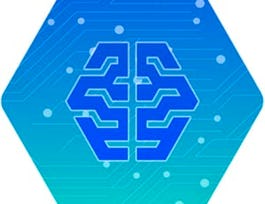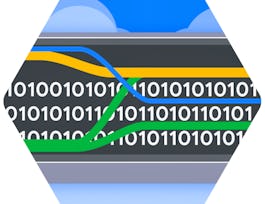Data pipelines typically fall under one of the Extract and Load (EL), Extract, Load and Transform (ELT) or Extract, Transform and Load (ETL) paradigms. This course describes which paradigm should be used and when for batch data. Furthermore, this course covers several technologies on Google Cloud for data transformation including BigQuery, executing Spark on Dataproc, pipeline graphs in Cloud Data Fusion and serverless data processing with Dataflow. Learners get hands-on experience building data pipeline components on Google Cloud using Qwiklabs.

Building Batch Data Pipelines on Google Cloud
This course is part of multiple programs.
Taught in English

Instructor: Google Cloud Training
44,911 already enrolled
Included with 
Course
(1,671 reviews)
85%
What you'll learn
Review different methods of data loading: EL, ELT and ETL and when to use what
Run Hadoop on Dataproc, leverage Cloud Storage, and optimize Dataproc jobs
Build your data processing pipelines using Dataflow
Manage data pipelines with Data Fusion and Cloud Composer
Details to know

Add to your LinkedIn profile
4 quizzes
Course
(1,671 reviews)
85%
See how employees at top companies are mastering in-demand skills

Build your subject-matter expertise
- Learn new concepts from industry experts
- Gain a foundational understanding of a subject or tool
- Develop job-relevant skills with hands-on projects
- Earn a shareable career certificate


Earn a career certificate
Add this credential to your LinkedIn profile, resume, or CV
Share it on social media and in your performance review

There are 6 modules in this course
In this module, we introduce the course and agenda
What's included
1 video
This module reviews different methods of data loading: EL, ELT and ETL and when to use what
What's included
6 videos1 quiz
This module shows how to run Hadoop on Dataproc, how to leverage Cloud Storage, and how to optimize your Dataproc jobs.
What's included
11 videos1 quiz1 app item
This module covers using Dataflow to build your data processing pipelines
What's included
13 videos1 reading1 quiz6 app items
This module shows how to manage data pipelines with Cloud Data Fusion and Cloud Composer.
What's included
13 videos1 quiz2 app items
Course Summary
What's included
1 video
Instructor

Offered by
Recommended if you're interested in Cloud Computing
Why people choose Coursera for their career




Learner reviews
Showing 3 of 1671
1,671 reviews
- 5 stars
66%
- 4 stars
25.49%
- 3 stars
6.16%
- 2 stars
1.49%
- 1 star
0.83%
New to Cloud Computing? Start here.

Open new doors with Coursera Plus
Unlimited access to 7,000+ world-class courses, hands-on projects, and job-ready certificate programs - all included in your subscription
Advance your career with an online degree
Earn a degree from world-class universities - 100% online
Join over 3,400 global companies that choose Coursera for Business
Upskill your employees to excel in the digital economy
Frequently asked questions
Yes, you can preview the first video and view the syllabus before you enroll. You must purchase the course to access content not included in the preview.
If you decide to enroll in the course before the session start date, you will have access to all of the lecture videos and readings for the course. You’ll be able to submit assignments once the session starts.
Once you enroll and your session begins, you will have access to all videos and other resources, including reading items and the course discussion forum. You’ll be able to view and submit practice assessments, and complete required graded assignments to earn a grade and a Course Certificate.



